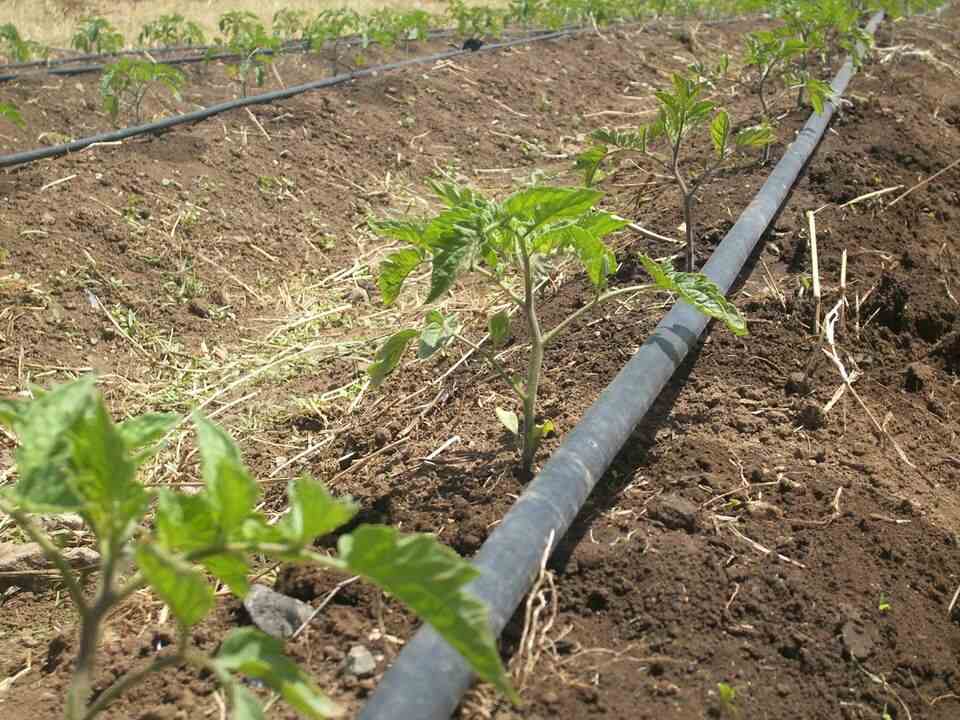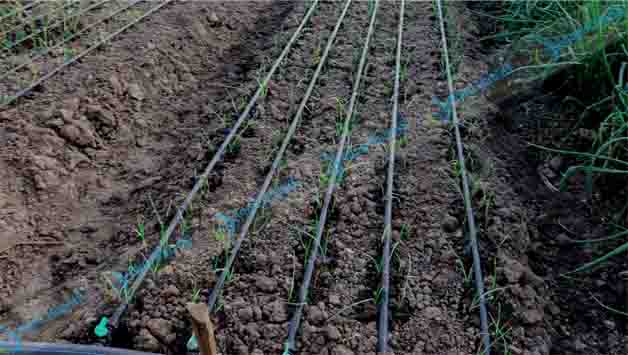Blog
Irrigation Farming in Kenya

Irrigation farming in Kenya is done using top irrigation systems from Aqua Hub, a top climate-smart systems supplier in Kenya.
Call 0790719020
Only 17% of land in Kenya is deemed suitable for rainfed agriculture, leaving 83 % remaining land in need of irrigation. However, less than 10 % percent of land in Kenya has been put under irrigation. Therefore, irrigation is essential to transform agriculture and enhance food security, which has been an issue for decades. This blog addresses the need for irrigation, sustainable irrigation practices, cost, benefits and solutions to challenges of starting irrigation farming.
Understanding Irrigation Farming in Kenya
Irrigation farming is the technique of growing crops by applying water to plants using artificial manual or automated methods. Irrigation farming in Kenya is commonly done in dry regions including Machakos, Laikipia, Narok, Kajiado, Garrisa, Wajir, and Kitui. However, irrigation is becoming popular all over the country as an alternative for year-round short season crop farming.
The Need for Irrigation
Agriculture in Kenya specifically crop farming, still relies on rainfall which is insufficient and less reliable due to climate change. There is a potential of improving general yield and food sustainability by implementing irrigation farming in Kenya.
Demand for small scale irrigation systems is on the rise with farmers ready to utilize smart irrigation solutions.
Rainfall is unreliable, and crops often face a high risk of damage by prolonged droughts. With a controlled irrigation system, crops can receive adequate rates.
Methods of Irrigation in Kenya
Drip Irrigation in Kenya

Drip irrigation delivers water directly to the plant roots through a network of tubes and emitters. This method minimizes water wastage and is ideal for high-value crops such as tomatoes, onions, and cabbages.
Drip irrigation uses driplines to emit water at a balanced rate to plants along the plant lines. Emitters with different hole spacing are available in Kenya; dripline of 15 cm, 20cm and 30 cm spacing respectively.
Drip irrigation kits or systems are available for different farm sizes including 1 acre, ½ acre, ¼ and ⅛ acre.
Sprinkler Irrigation in Kenya
Sprinkler systems simulate rainfall by distributing water through a system of pipes and sprinklers. This technique is suitable for a wide range of crops and is particularly effective in areas with uneven terrain.
Sprinklers available include plastic impact, micro sprinklers, spray heads, rain guns and flange types. Sprinkler irrigation is good for high water requirement crops such as leafy greens, maize, animal feeds, sugar cane, cotton, rice, sorghum, arrow roots, cassava and carrots.
Rain Hose Irrigation in Kenya
Rain hose irrigation produces rain like irrigation spray effect through intermittent pipes laid in between plant lines. The pipes are available in diameters of 25mm, 32mm, 50 mm and 63 mm, all of them deliver different flow rates and spray radius.
It is designed for irrigation of cabbage, kales, leafy greens, broccoli, animal feeds (napier, lucerne, star grass) and legumes.
Furrow Irrigation
Although less efficient, flood irrigation involves directing water to the farm using channels. It is an economical way of irrigating crops such as rice, potato, and wheat.
Cost of Irrigation Systems in Kenya
Drip Irrigation Cost
Cost of drip irrigation in Kenya is between KES 85,000 to KES 190,000 per acre depending on the number of driplines laid on each bed.
Our drip irrigation kits are available on the costs below.
- 1 acre: KES 135,000 – KES 180,000
- ½ acre: KES 70,000 – KES 90,000
- ¼ acre: KES 40,000 – KES 55,000
- ⅛ acre: KES 20,000 – KES 25,000
Sprinkler Irrigation Cost
Sprinklers vary in cost according to size, type and flow rates. On average, the cost of sprinklers in Kenya starts from KES 500 to KES 45,000.
Rain Hose Irrigation Cost
Rain Hose Prices in Kenya is according to farm size and ranges from KES 75,000 to KES 110,000 per acre. Cost of Rain Hose Pipes is between KES 2,800 to KES 5,600 for diameters ranging from 25m to 63 mm size.
How to Determine the Best Irrigation Method to Use
To identify and start irrigation farming with a well-suited irrigation method, you’ll need to consider.
- Landscape: is your land flat, slopy or hilly? a flat land will work well with drip irrigation. For slopy or hilly lands, sprinklers are reliable.
- Size of the land: land size will determine which drip kits, sprinklers or rain hose kits to use. You can choose from 1 acre, ½, ¼ acre drip kits or various sprinkler types.
- Water availability: sprinklers and rain hose require a lot of water while drip kits use less.
- Crop type: depending on the method of application, irrigation systems vary on suitability to variety of plants. For example, sprinklers are not good for tomato, capsicum and bulb onions.
- Water Needs (flow rate Requirement): the crop water needs determine the irrigation method to use.
- Cost: budget amount is another consideration on which irrigation method you should go for.
- Maintenance: the cost and ease of maintenance is also worth considering.
- Source of water: assess your water source to determine which filter, pump and irrigation method to use.
Best Practices for Successful Irrigation Farming in Kenya
- Soil testing: ensuring proper soil testing to determine PH and diseases before planting or deciding which irrigation system to use.
- Using appropriate irrigation methods: Consult Aqua Hub for help in crop-specific irrigation system inquiries and installation.
- Organic weed control: application of mulching paper to suppress weeds.
- Proper maintenance of irrigation systems: regular checks and repairs on pipes and key components of irrigation systems.
- Proper design and installation of irrigation systems: With our expertise, we conduct proper installation for durable irrigation systems.
- Use of recommended pipes and fittings : using the right pipes and accessories ensures reliable and long lasting irrigation system performance.
Types of Irrigation Farming in Kenya
Capsicum Irrigation in Kenya
Capsicum is one of the popular profitable crops grown through irrigation farming in Kenya. It is best irrigated through drip irrigation systems as it offers balanced water and nutrients.
Yellow, red and green capsicum have a high market demand in Kenya.
Onion Irrigation in Kenya

Another high Value crop that needs high care and control can easily attract fungal infections, bulb rots or even wilt. Fungal infections and roots are caused by excess water. Wilting is common when moisture is inadequate and may result to low quality and smaller bulbs. The ideal irrigation for onions is drip system. Sprinklers are also effective for irrigation of large onion plantations.
Coffee Irrigation Farming
Coffee farming is a high potential crop that also enhances 100% annual yield when grown under irrigation. Button drippers are best for irrigating coffee plants in areas with low rainfall.
Strawberry Irrigation in Kenya
Growing strawberries can be done in open areas but greenhouse environments are preferred due to ideal temperature and moisture control.
Strawberries farming in Kenya is challenged by fungal infections and fruit damage by excess water. Drip irrigation and mulching can enhance the quality and higher yield of strawberry plants.
Garlic Irrigation Farming in Kenya
Irrigation of garlic in Kenya is by drip irrigation as it reduces infections, improves moisture and nutrient access and suppress weeds. Garlic farming is among the highly profitable gaps in agriculture. When well irrigated, the plant has a high yield approximately 4 – 5 tons per acre with a kg sold at KES 220 – KES 300.
Tomato Irrigation in Kenya
Popular high value crops that can attract high income in peak seasons. Tomato plants require irrigation and nutrient control thus suited to drip irrigation. Drip irrigation prevents fungal infection of the leaves which is common to rain fed tomato varieties. The crop thrives well in greenhouses as compared to open fields.
10 Benefits of Irrigation Farming in Kenya
- Promotion of Food Security: irrigation is an alternative solution for rain dependent farming, ensuring crop production even in dry seasons.
- Land Utilization: Dry idle and arable land is turned into a productive region.
- Utilization of water resources: Irrigation farming enhances proper and concise use of water by minimizing wastage.
- Soil and environment conservation: Irrigation systems when used properly lowers soil erosion which occurs in rainfed lands.
- Promote efficiency: less water use, balanced irrigation and constant water supply.
- Lowers labor cost: labor needs are lower since water flows through pipework
- Convenient for both Small- and Large-Scale Farmers: irrigation is doable whether you have small or large farms.
- Higher yield: the yield and quality of crops grown through irrigation is high.
- Optimal Fertilizer supply: Irrigation systems can be used to feed crops with nutrient fertilizers. Through irrigation kits nutrients are equally fed to every crop.
- Applicable to Wide range of Crops: Irrigation is compatible to many crops.
Challenges that affect Implementation of Irrigation Farming in Kenya
- Farmers lack technical Knowledge concerning climate smart and irrigation equipment | solutions
- Economic and financial constraints. The cost of irrigation farming is unaffordable to most farmers.
- Water scarcity makes it difficult to start irrigation farming.
Possible Solutions to Challenges affecting irrigation in Kenya
- Organizations such as Aqua Hub Kenya are equipping farmers with affordable and sustainable irrigation solutions. We train farmers, supply and install drip irrigation systems, sprinklers, rain hose kits and lawn irrigation kits.
- Government and non-governmental organizations are offering financial support for farmers to venture into irrigation farming. Through grants, community water projects, world bank grants, co-operative societies and community funding these agencies help farmers meet the high cost of irrigation farming.
- Bank Loans, and products such as asset financing give farmers the financial muscle to venture in irrigation farming.
